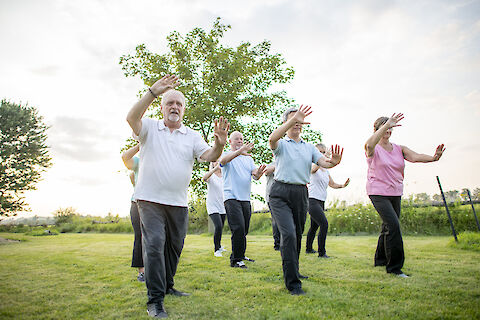
Significant challenges come with managing heart disease for our elderly loved ones. One crucial aspect that can make a notable difference is incorporating physical activities into their lifestyle. No, integrating exercise in cardiovascular disease management doesn't mean heavy lifting or marathon training. Think gentle and adaptable activities tailored to their abilities and limitations. With some practical tips and strategies, you can help them establish a heart-healthy exercise routine.
The Role of Exercise in Cardiovascular Disease Management
A healthy heart is crucial for longevity and overall well-being. Exercise plays a substantial role in maintaining heart health. Regular physical activity can help manage symptoms of cardiovascular diseases. It can even slow down the disease's progression. Exercise can help to control weight and reduce the risk of developing other health conditions. Plus, it strengthens the heart and cardiovascular system, making it a necessary addition to everyone’s daily routine.
Suitable Exercises for Seniors With Cardiovascular Disease
Of course, high-intensity workouts are not suitable for most older adults. Incorporating exercise in cardiovascular disease management is all about finding the right balance. It’s also about choosing safe, manageable, and enjoyable activities for them. Simple exercises like walking, cycling on a stationary bike, or water aerobics can be incredibly beneficial. Strength training with light weights or resistance bands can also be helpful. Just be sure all movements are approached carefully and in moderation.
Yoga and Tai Chi
Yoga and Tai Chi are excellent for flexibility and balance, which are beneficial for seniors. Ballroom dancing or petanque can also be attractive options. They combine physical activity with a social element. Remember, the idea is to get them moving without causing any strain or discomfort.
The Importance of Medical Guidance in Exercise Routines
Before you rush off to buy those walking shoes or sign up for a water aerobics class, there's an essential step you cannot skip. Consult with a medical professional. Every person is unique, and so is their health condition. Get the green light from your doctor or physiotherapist who understands your specific needs and limitations. Discuss the exercise options, frequency, and intensity that would be safe and effective for them. This way, you can ensure your loved one gets the benefits of exercise without risking unwanted complications.
Practical Strategies for Caregivers
It might feel daunting to add “exercise coach” to your long list of responsibilities as a caregiver. However, the goal is to incorporate the exercises into your loved one's routine, making it a part of their daily life. You can do this by setting clear but flexible schedules. Make working out fun by involving family members or friends. Plus, celebrate small victories to keep them motivated.
Your role in encouraging, assisting, and even joining them in their exercise routine can make a huge difference. It's all about enhancing their physical health and boosting their mood and confidence.
Let Senior Helpers Conroe Assist You
Managing cardiovascular disease goes beyond medication. A well-rounded approach involving exercise in cardiovascular disease management can improve your loved one's quality of life and potentially slow down the disease progression. If you're in Bryan, Conroe, College Station, Livingston, or Huntsville and need additional support or resources, don't hesitate to contact us at Senior Helpers Conroe. We're here to help you navigate this journey and provide assistance to make life a little bit easier for you and your loved one.